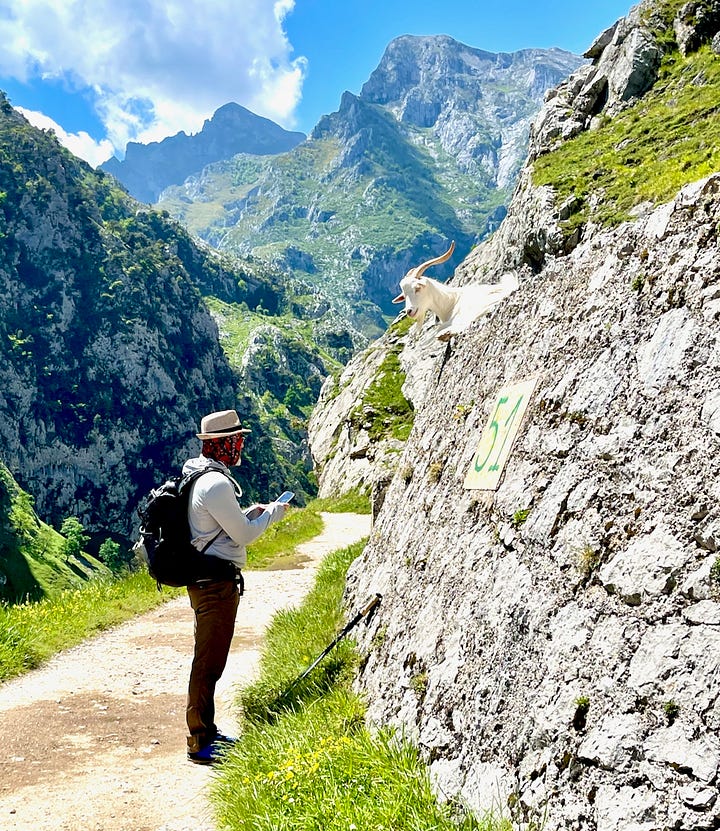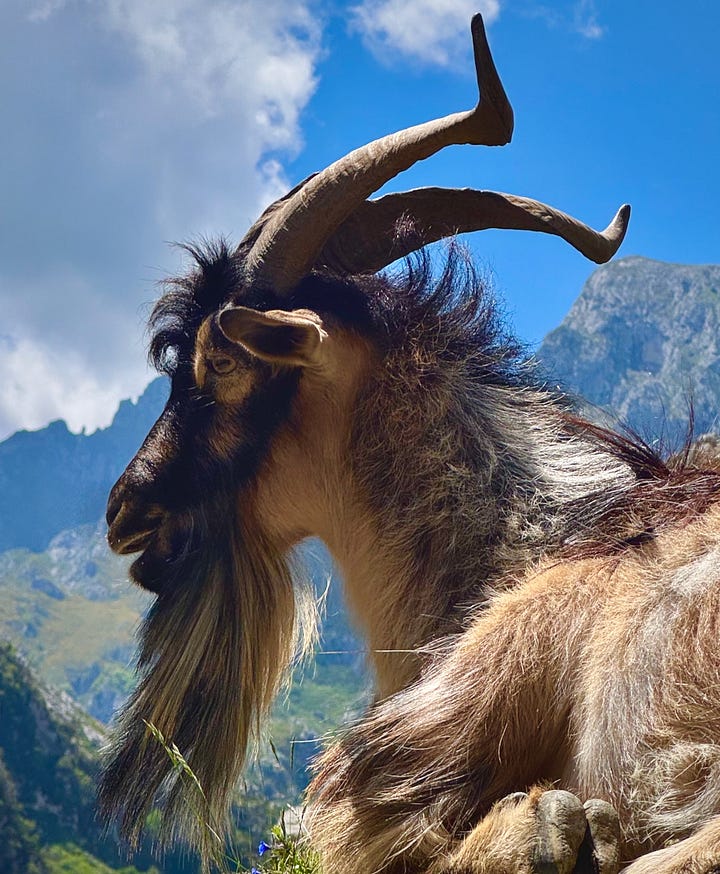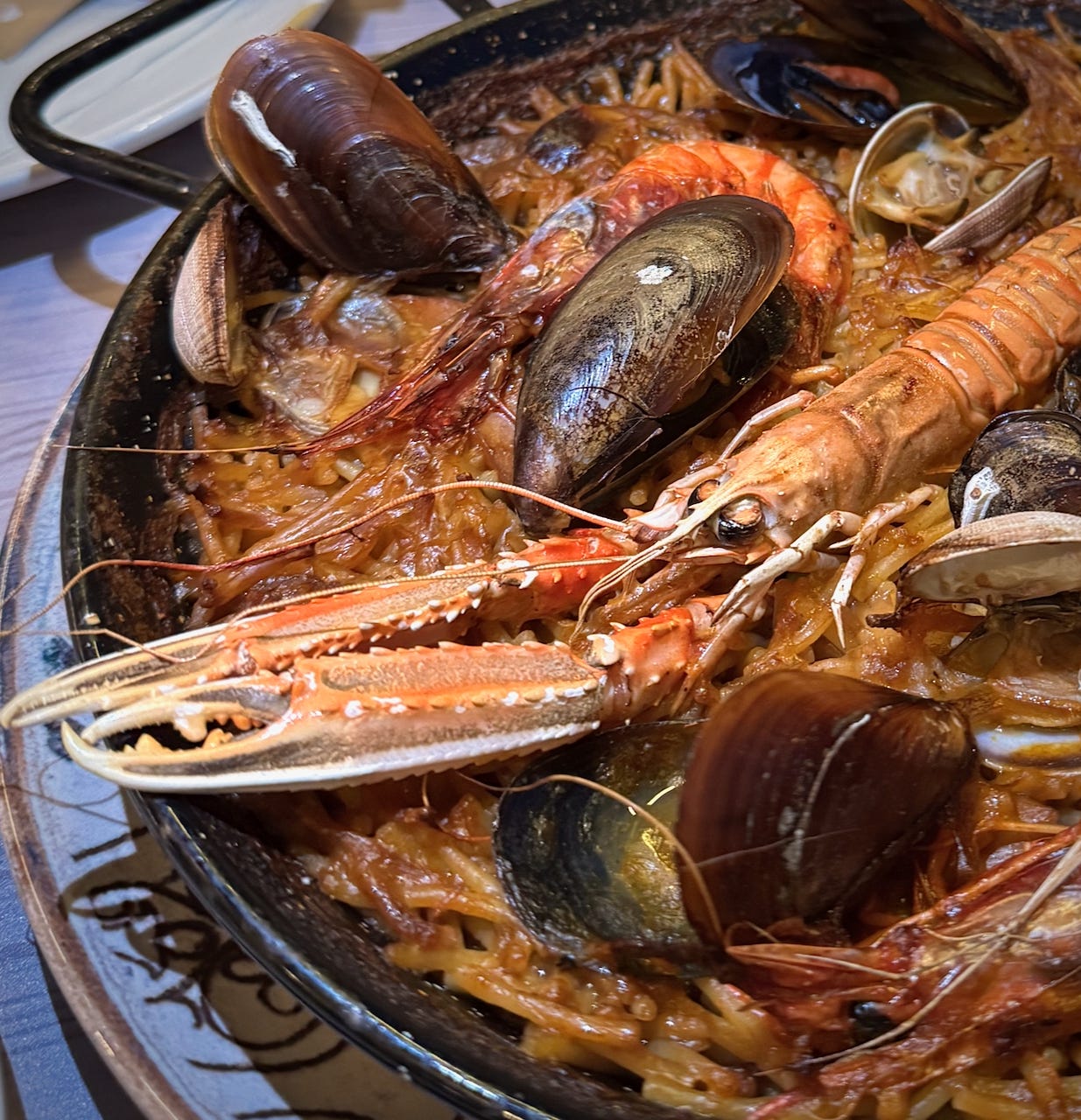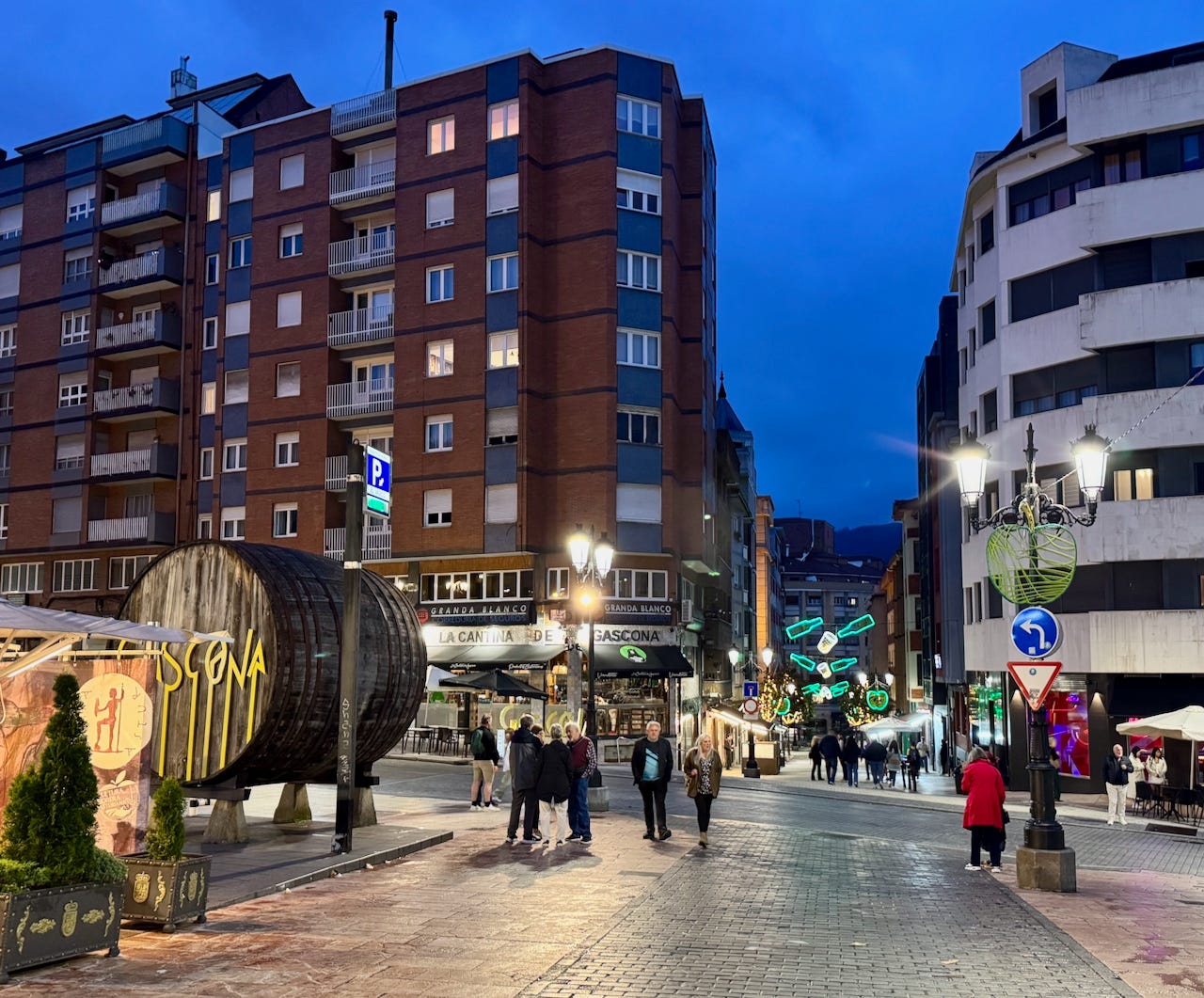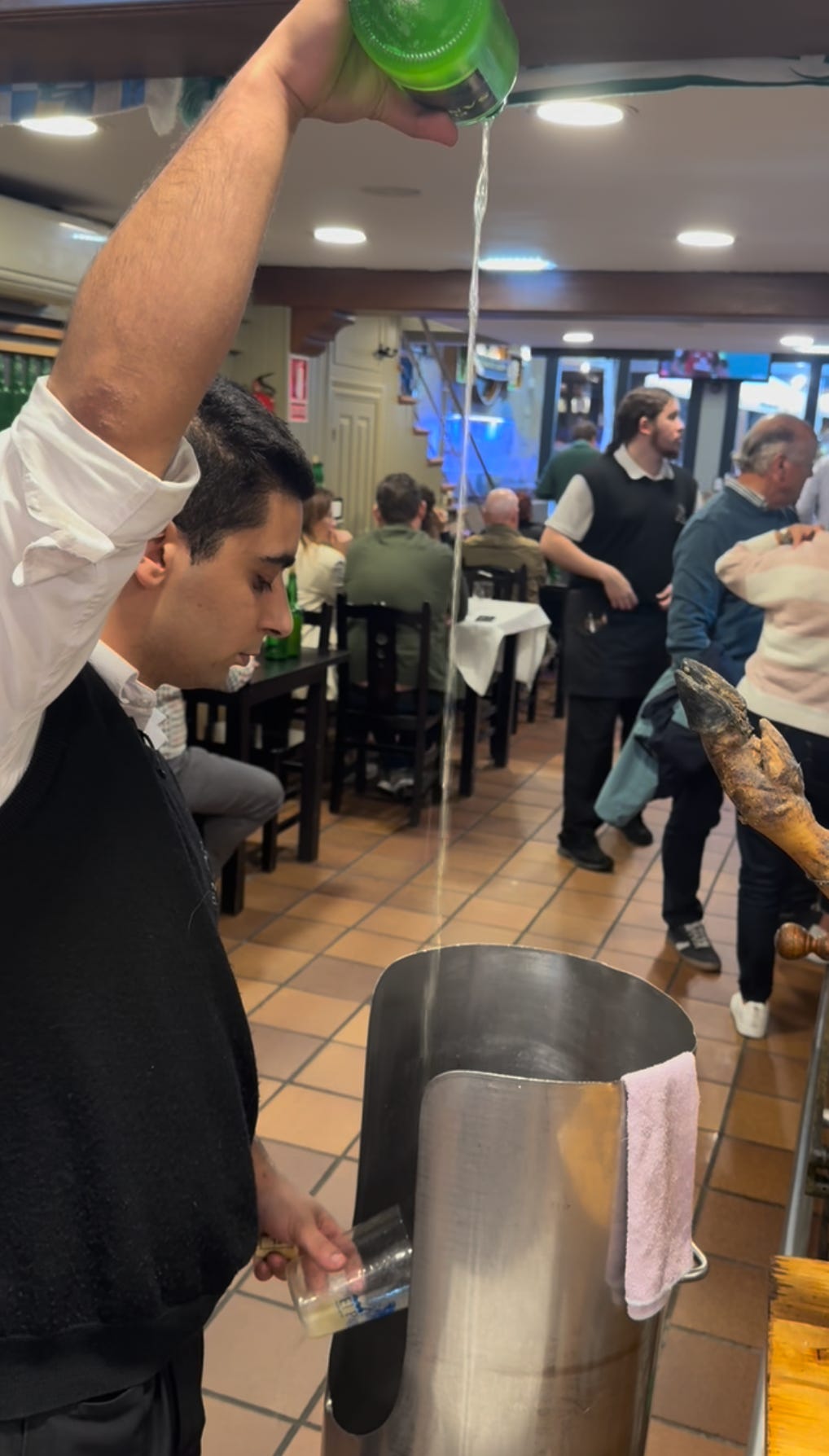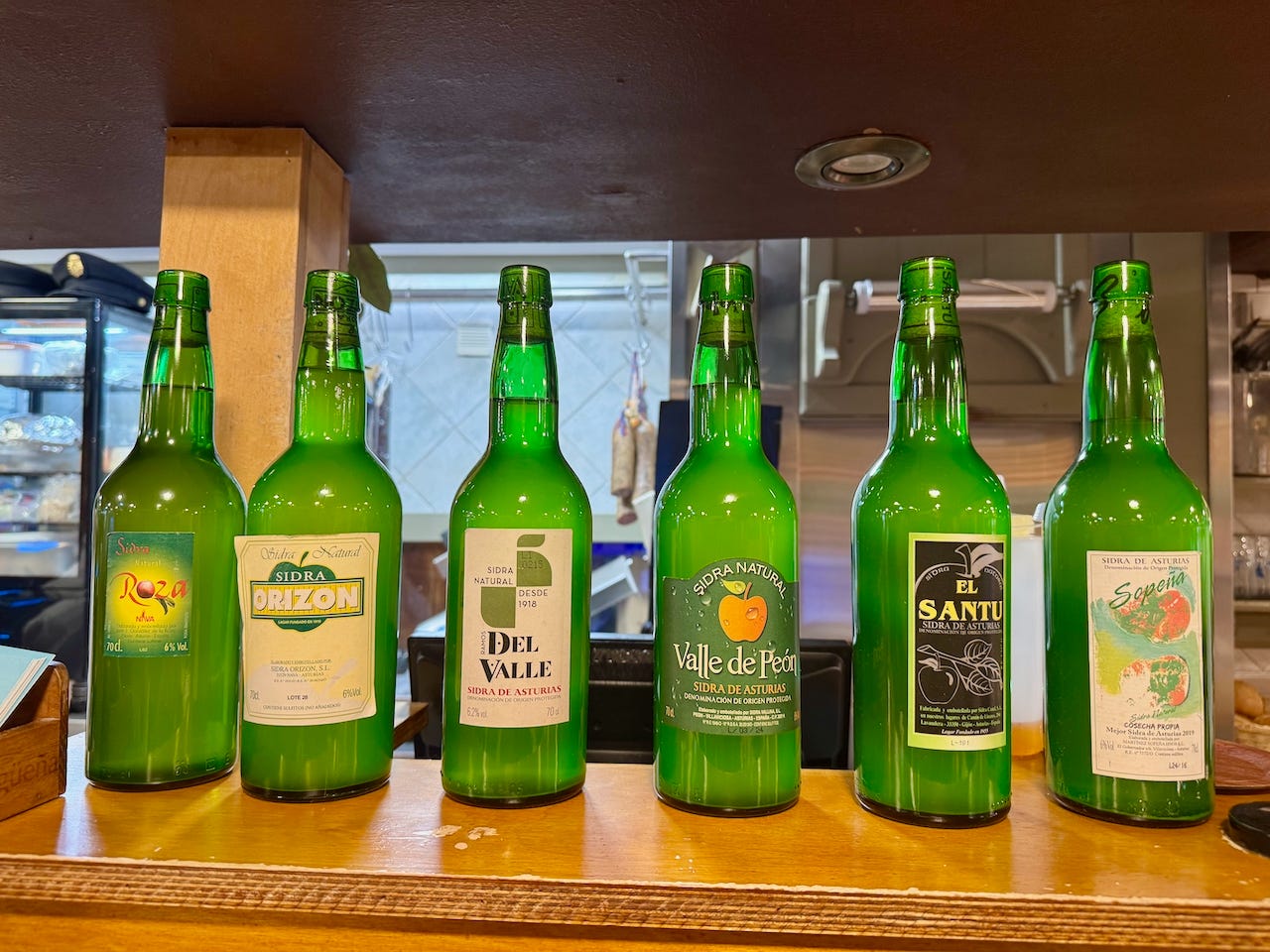Schnip's Trips: Spain, Pt. 2 🍽
From Oviedo to the haunts of Salvador Dalí, we discover cascading ciders, punchy pintxos and the sweet joy of Crema Catalana
In May, we spent a little over two weeks traveling across Central and Northern Spain. This is part two of that journey. If you missed part one, head back first to catch up. Just like last week, I’m letting the photos do most of the heavy lifting, with added contextual commentary — most all of it written by Lauren Hug this week — to fill in some short stories and perhaps act as a rough guidebook for you in the future. Cool. Let’s get back to eating (and drinking)!
Oviedo
This Central Northern coastal city in the Asturias region — which we absolutely loved — is known for its sidra (cider), with an entire street known as Cider Ally. Neither of us are huge cider fans, often finding them too sweet for our taste, but Asturian cider drinks crisp and dry. Aerated by escanciados who artfully pour the naturally fermented apple liquid from high overhead (with miraculously little splashing on the floor) sidra is a ritual as much as it is a beverage. It’s poured in small sips, to be consumed immediately with the pouring process repeated for each gulp. (That’s because it only undergoes a single wild yeast fermentation, and no carbon dioxide is added. So it’s essentially flat without the aeration.)
We try to discern differences between bottles with distinct labels, but we’re told only that they represent different apples. At one sideria, La Ferreria, we order fabada asturiana — a classic stew of buttery broad beans with chorizo, morcilla (blood sausage) and bacon — despite the concierge at our hotel warning us away from it because to him it is too heavy for an early summer evening. We’re glad our determination to try local dishes led us to ignore him because the dish is a hearty delight, made even more enjoyable when served with soft yellow sunflower bread that begged for dunking.
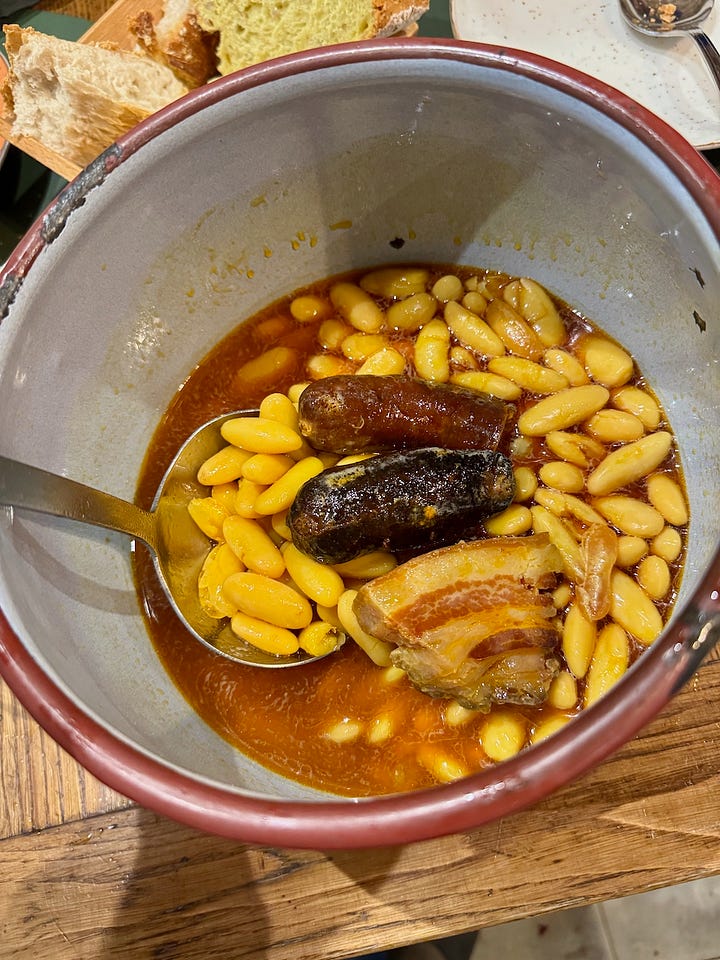
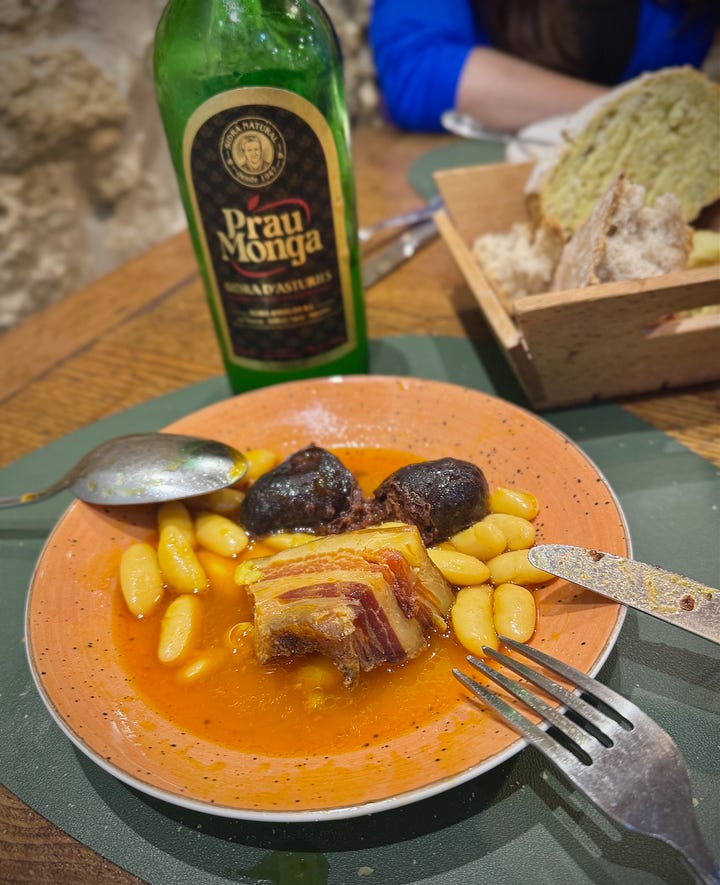
As full as we are, we wander down Cider Alley to another popular spot, Tierra Astur, for dessert. We order Asturian crepes (thicker than French crepes), an apple-and-cider cake with a gooey, cheesecake vibe, and some cloying regional liqueurs for “research.”
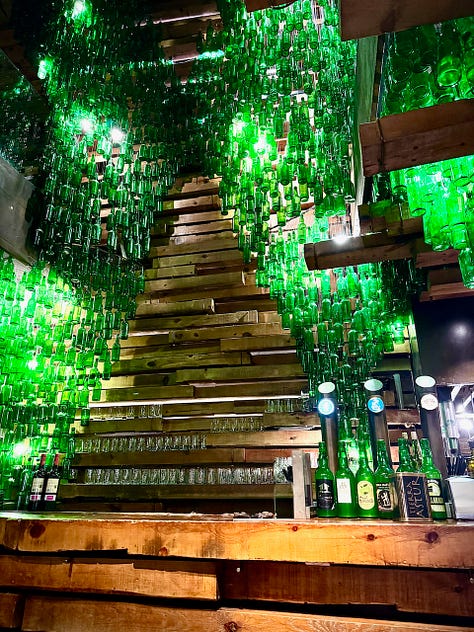
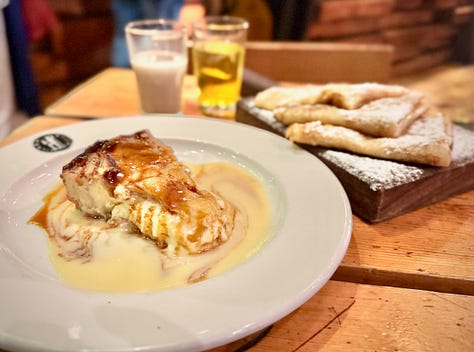
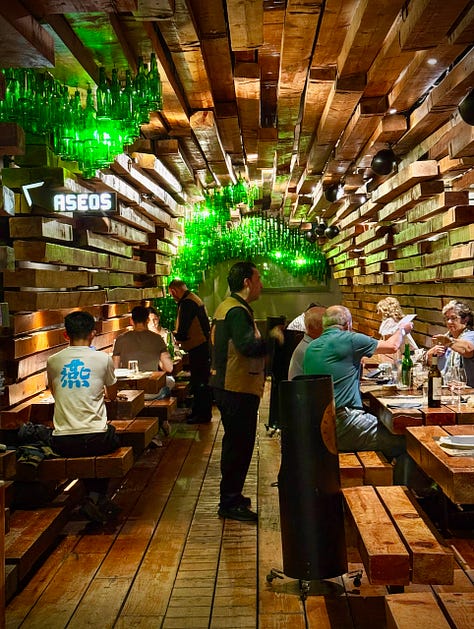
The next day we enjoy art deco and Art Nouveau architecture, statues with character everywhere, a phenomenal city park that was a monastery orchard centuries ago, and local sweets from the Rialto confectionary. We try the Princesitas (tiny cakes with a citrus flavor), Carbayones (an almond pastry/cake), and the standout Moscovitas, thin, chocolate-covered almond cookies.
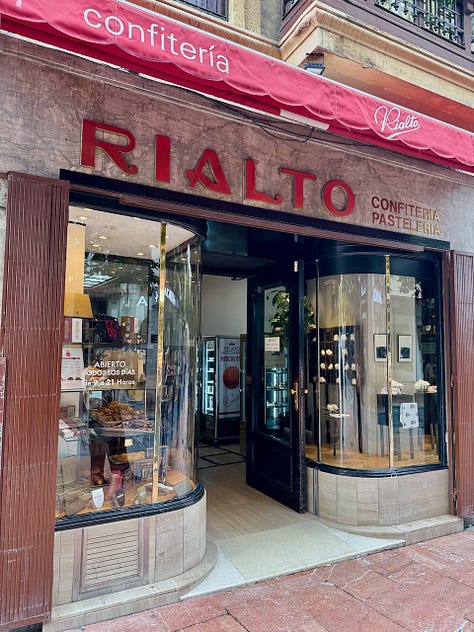
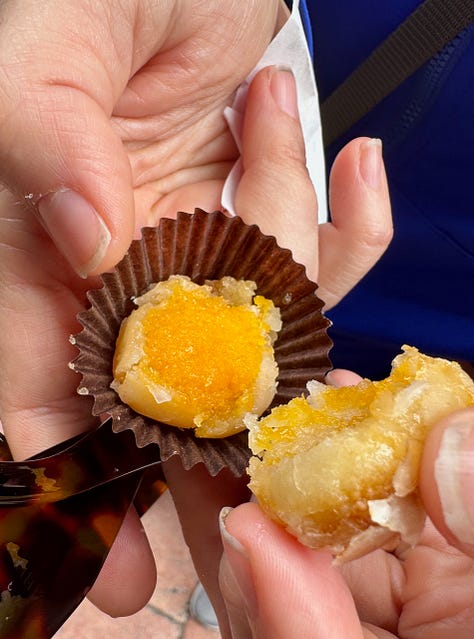
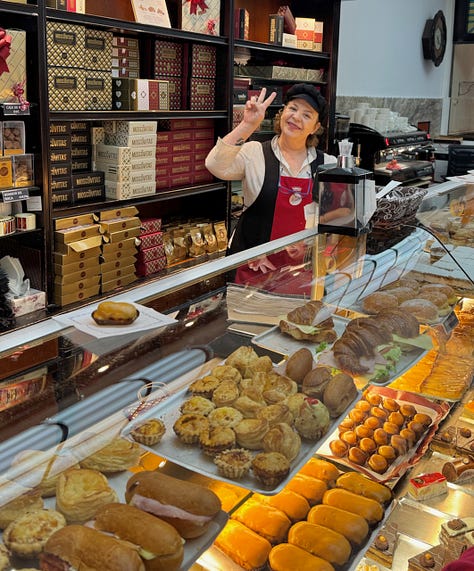
We later dine on Cider Row again, this time at El Pigüeña to try pastel de cabracho, a silky scorpion fish terrine, and pitu de caleya, an Asturian braised chicken dish finished with sherry, brandy and garlic olive oil.
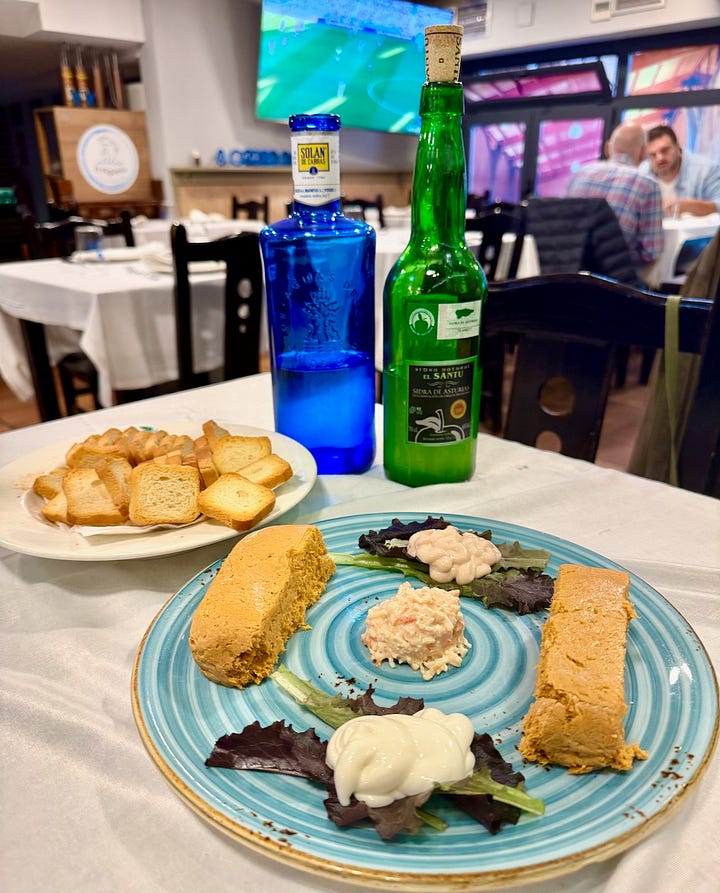
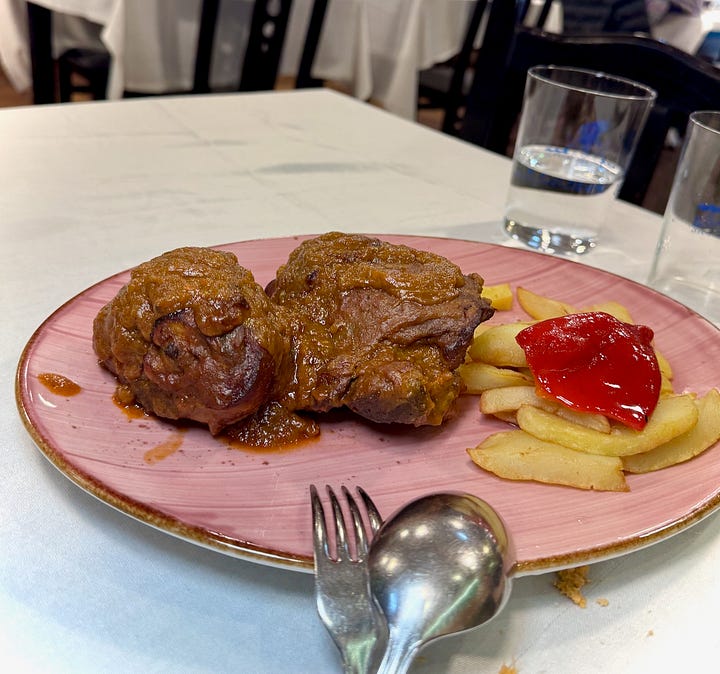
Santillana del Mar
Guidebooks and online sources tell you this charming medieval spot is a “town of three lies” — because it’s neither holy (santa), flat (llana) nor by the sea (mar). Nonetheless, it’s beautiful. We came for the local rite at Casa Quevedo: a glass of milk with cake. We tried the sobao version (cake-like), though you can also go with bizcocho (more like a cookie) or opt for quesada (closer to cheesecake, but not nearly as dense). All are house specialties they’ve been making for roughly half a century. The best part is the lore: In the 1950s, founder María Luisa Gómez claimed that if you don’t have a “vasuco” of milk and cake here, you won’t get married — a bit of marketing genius that stuck and still draws tourists. Since I almost never eat cheese or consume much dairy, this treat’s pretty much all for Matthew to scarf down on site as a midday sweet snack. He’s not unhappy about it.
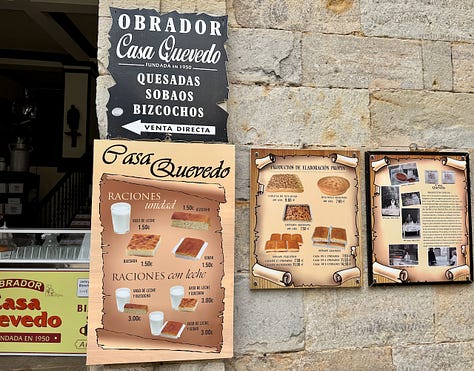
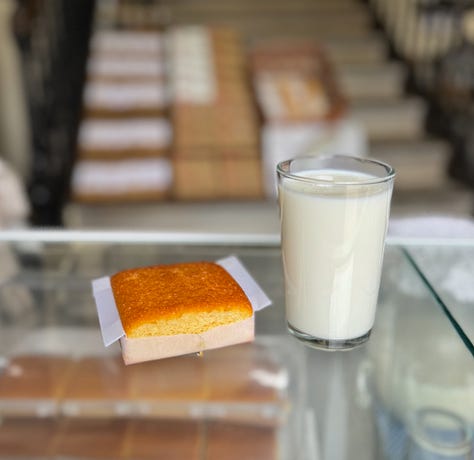
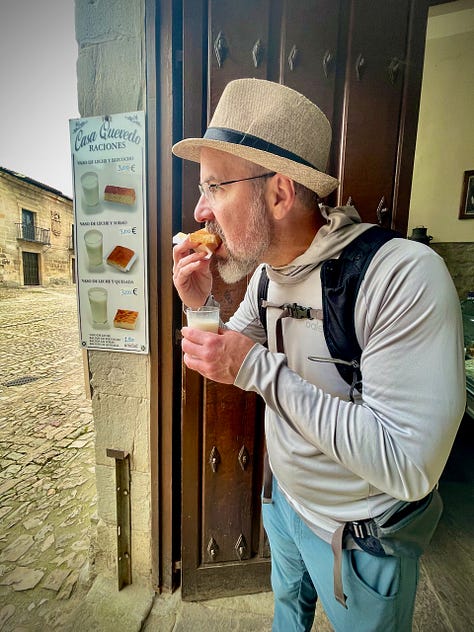
Pamplona
Pamplona was an unintended stop due to an itinerary curveball in Bilbao. (“Fuck you very much Europa League final and the 80,000 Brits you invaded the city with,” says Matthew.) Long story short: due to impending wedding plans of friends, we had to skip San Sebastian and a day-jaunt into France as envisioned, and reroute South to Pamplona on the fly.
It proved to be a culinary mixed bag. We stopped at Bar Gaucho because everyone says you should, but Matthew (still traumatized by his dance with Norovirus last year) was concerned about food safety with pintxos (Basque tapas) sitting out at room temp for hours on end, and I couldn't get over the six microwaves in full view behind the bar — astonishing for a place with a current Michelin recommendation and a past star. We ordered the much-lauded truffle egg (an almost raw egg in béchamel sauce with truffle, crunchy shoestring fries and flecks of Spanish ham) and foie gras on toast, which were both promptly popped in the microwave. Matthew found them plenty edible, but I was too put off by the nuking of the dishes to take more than a bite. (I’m making a face as I write this.)
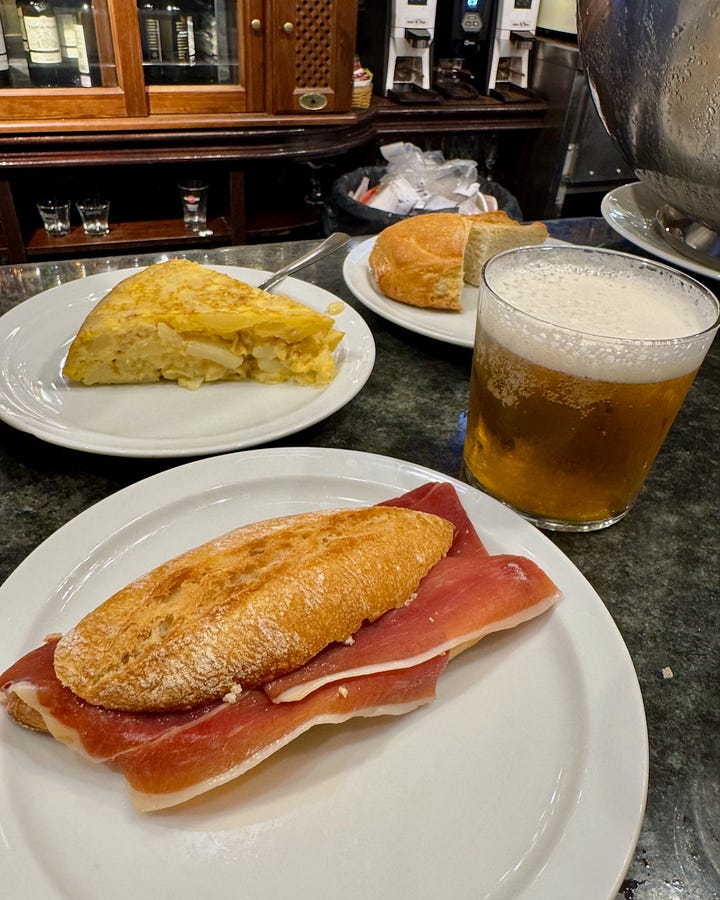
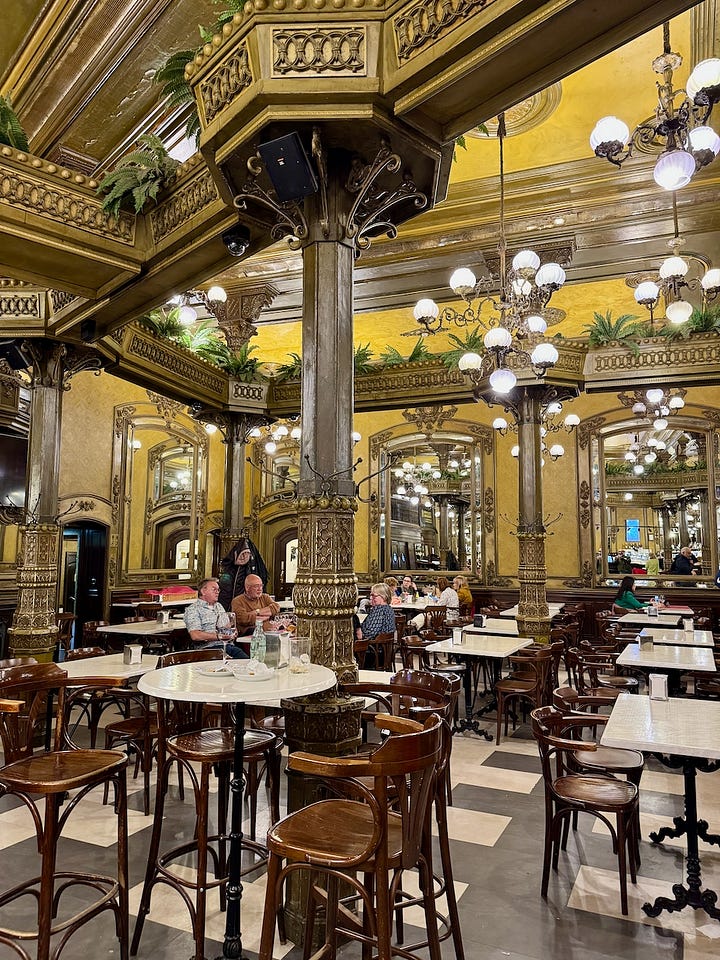
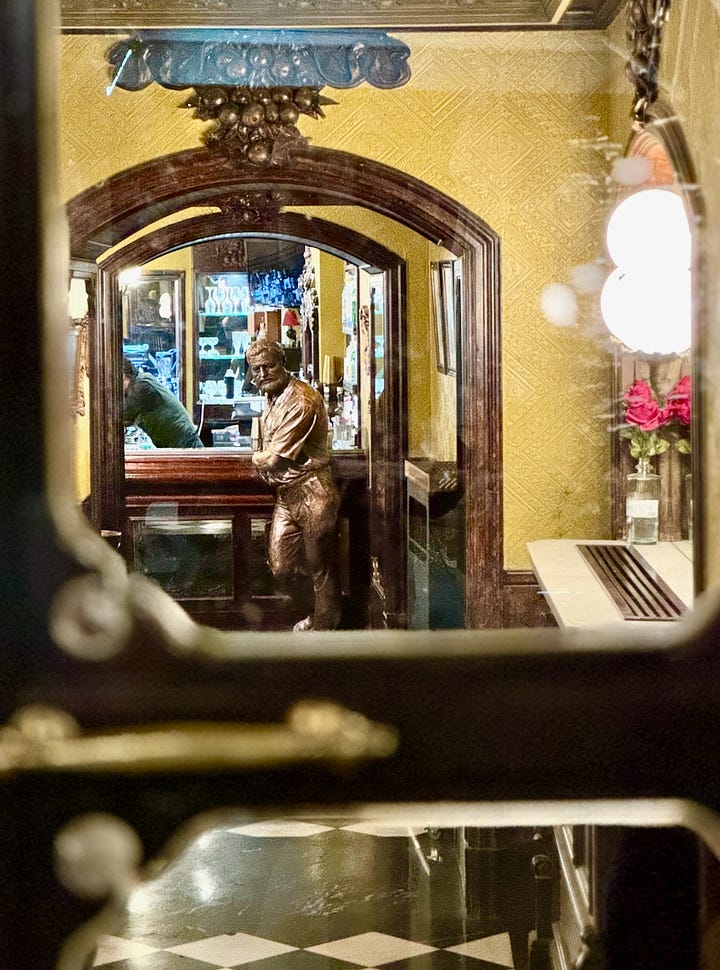
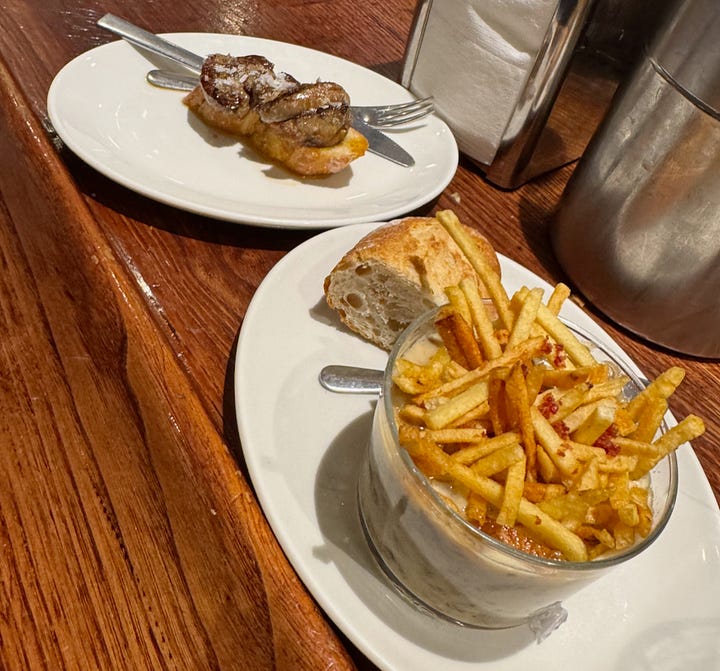
While not exciting, a simple Spanish ham sandwich, tortilla espanol and caña of beer at Café Iruña were elevated by the splendid Art Nouveau decor and literary mystique since this is where characters from Hemingway's The Sun Also Rises meet throughout the novel. Step into the side café and Hemingway’s leaning at the bar in bronze. (He shows up all over town).
In the morning we walked the encierro route (the pathway taken during the annual running of the bulls) ending at the bullring and, yes, another statute of Hemingway. Best bite of the stop came from Pastas Caseras Beatriz: a couple of garroticos (small croissants filled with a choice of pumpkin, apple or chocolate) and an enormous chocolate-dipped brioche filled buttercream that set us back about €4 total.
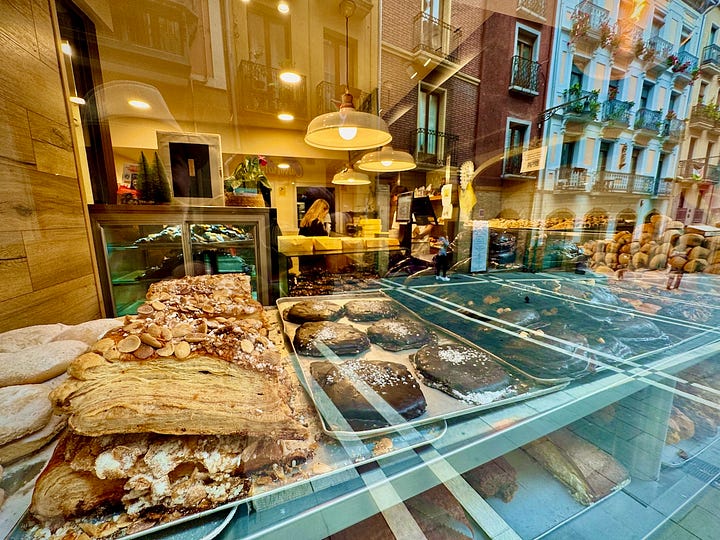
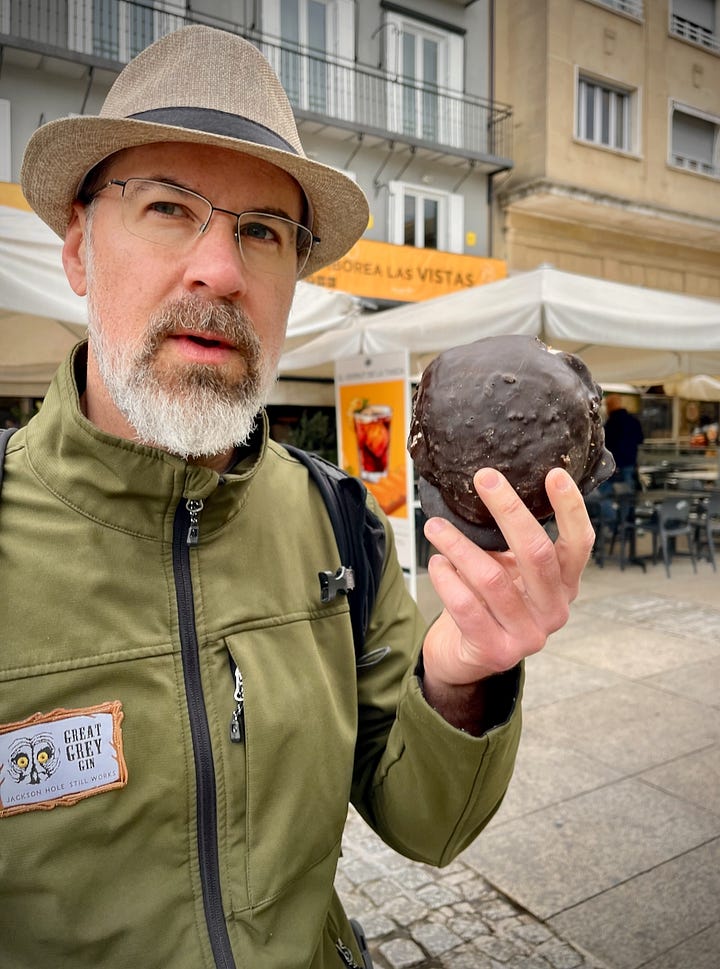
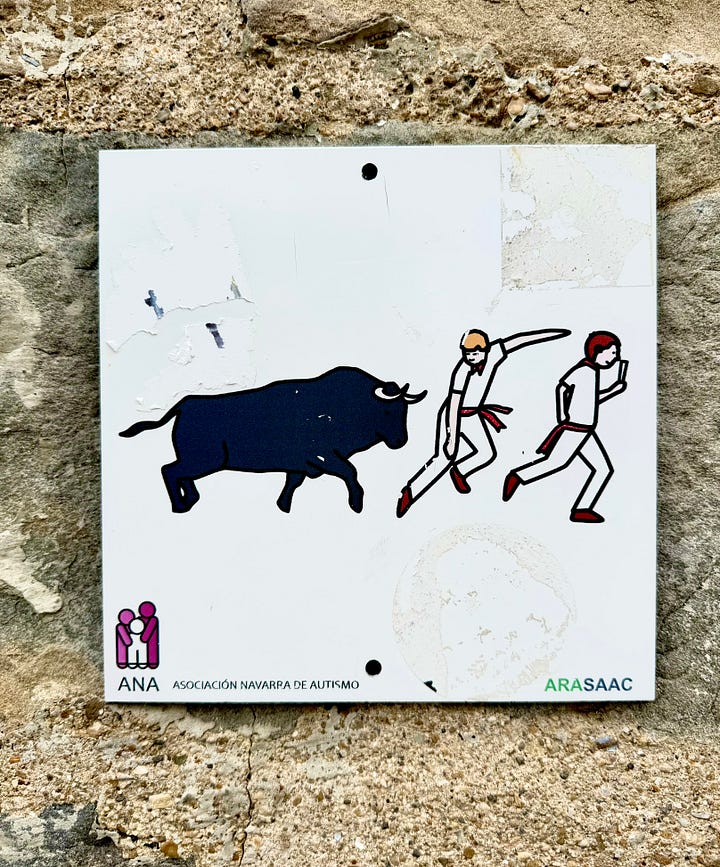
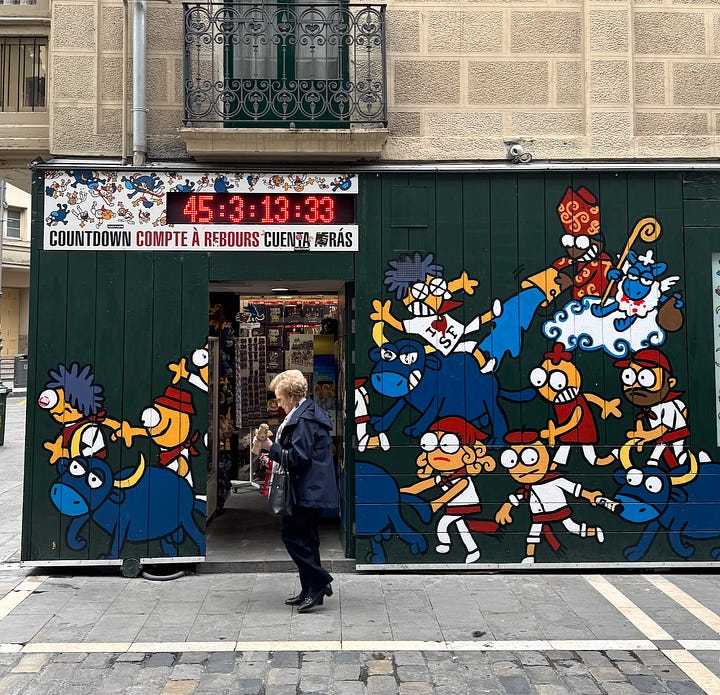
Cadequés
We stayed at Hotel Calina in Port Lligat, literally next door to Salvador Dalí’s house, where we hoped to get last minute tickets to the booked-out, 10-person-at-a-time tour. The hotel had easy parking (a small-town rarity) and a 20-ish minute hilly, scenic walk into town. A poolside meal at the hotel was so good, we were tempted to have all our meals there. The paella style was totally different from the saffron-forward versions we’d had in Zaragoza — more brown and earthy, almost like Creole dirty rice — and it paired with an intense local vino tinto that sipped leathery, musty, umami-mushroomy, with noticeable sediment. The wine came from the local terraced hillside vines visible the second we crested a mountain road past olive trees. A low-acid white paired better with the niçoise/tuna salad, lightening everything. Our Crema Catalana read like a runny crème brûlée — in a good way: more buttery, almost a crème anglaise foam under a caramelized sugar lid. (We would later indulge in a guilty treat at a Starbucks in Barcelona — hey, we needed a bathroom — ordering an iced Crema Catalana frappuccino that was actually amazing. Sign us up for Crema Catalana everything.)
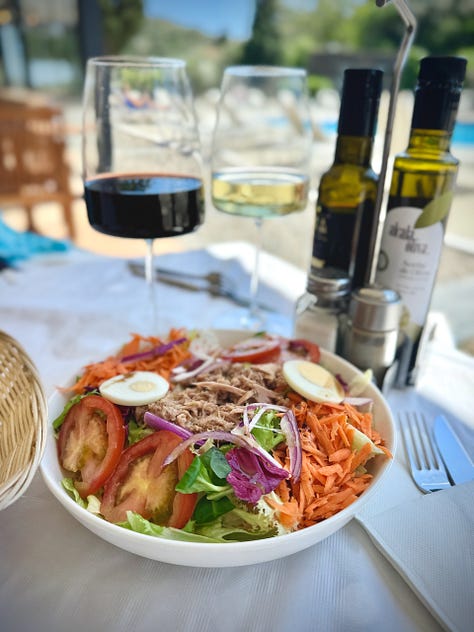
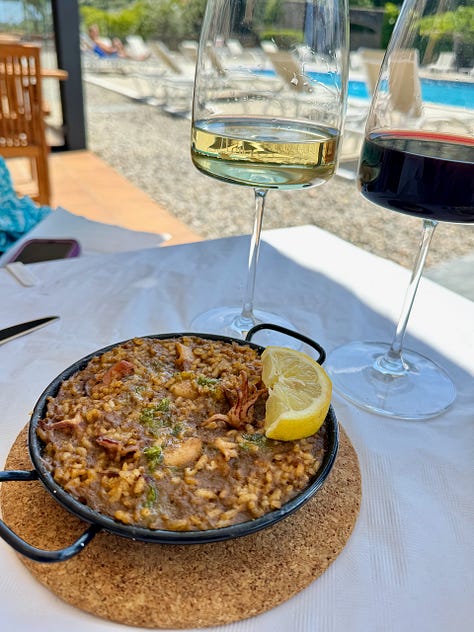
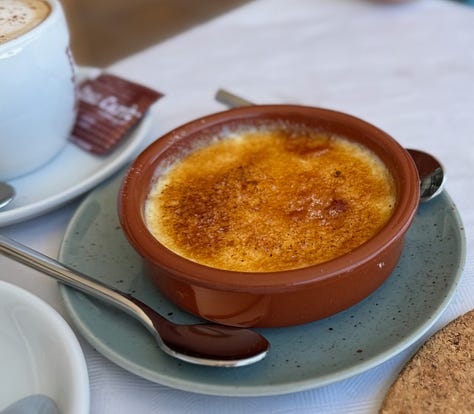
After dining and a dip in the pool, we showed up at the Dalí house, miraculously securing two tickets available for the tour starting within four minutes of our arrival. We then wound our way into town for more eating, mesmerized by the wild art abode we’d just witnessed. Elsewhere around town: zarzuela (seafood stew), fideuà (the noodle “paella”), escalivada — roasted red pepper, eggplant, onion (plus a little endive) — fried olives, and pan con allioli (the Catalan spelling of that garlicky, mayo-adjacent dip).
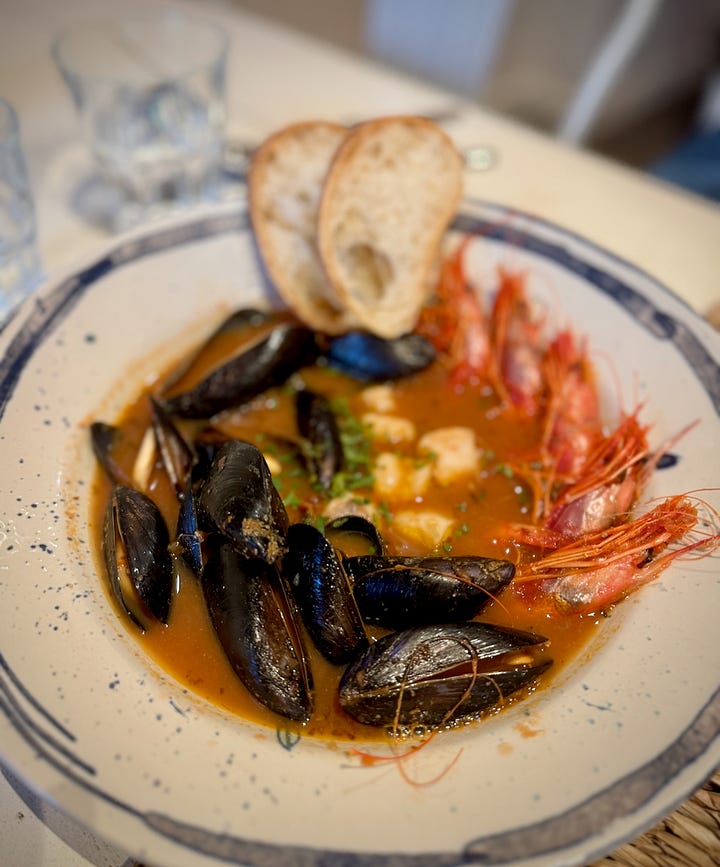
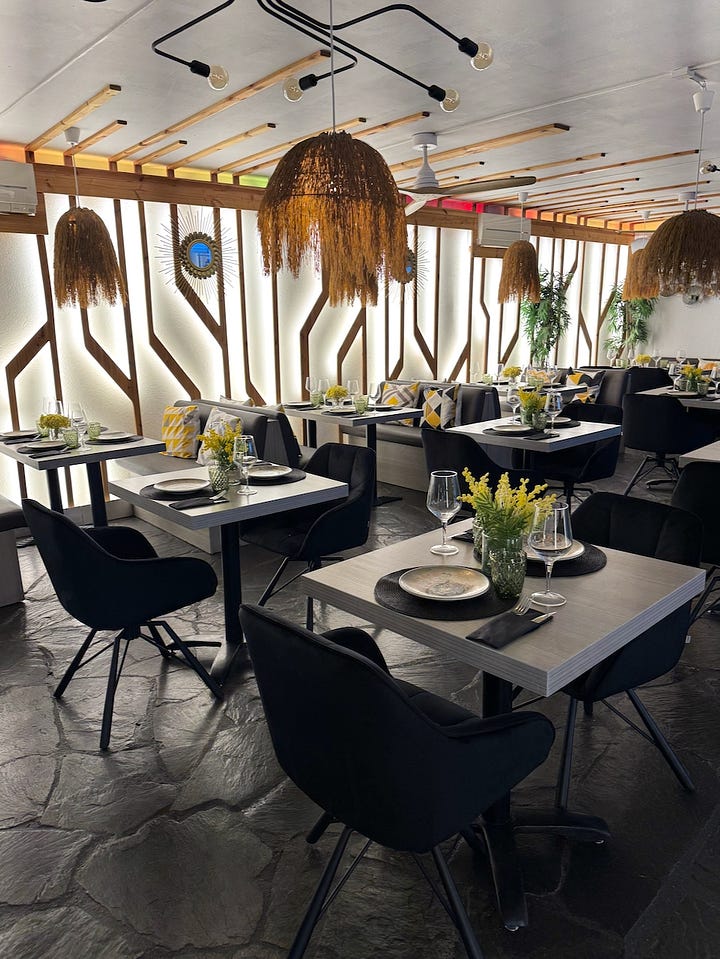
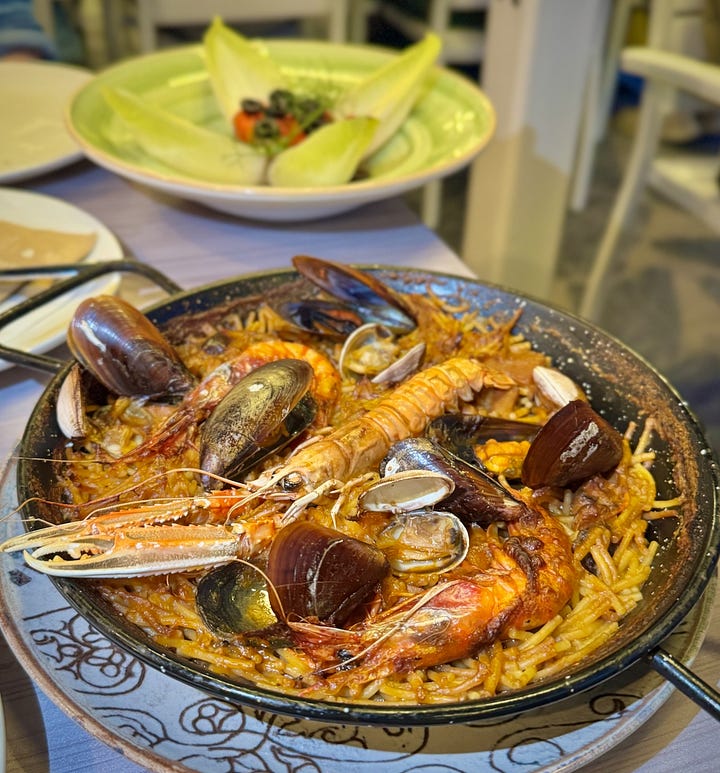
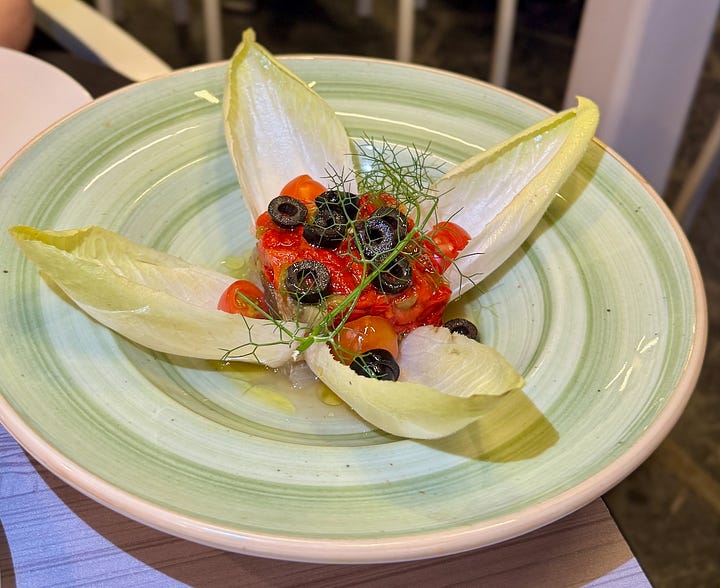
Gelato at Joia was a fun curveball: black truffle, black sesame, Thai coconut, and olive oil flavors. Sangria leaned dry, not sweet (thank you). Street-treats included bunyols de vent — anise “donut holes” that were light, airy, and moist inside — and a Crema Catalana–filled pastry (xuxo) that disappeared fast. (Because Crema Catalana!)
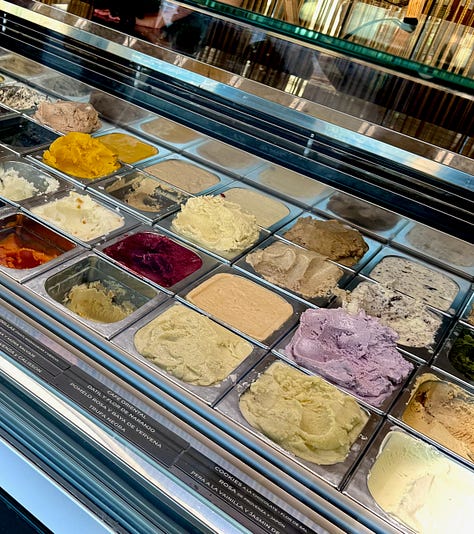
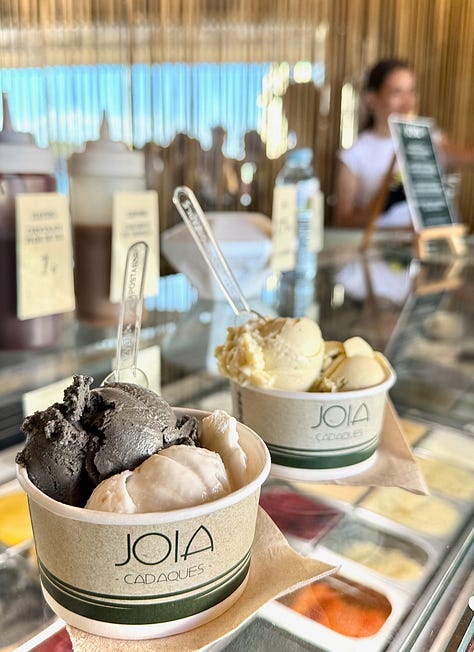
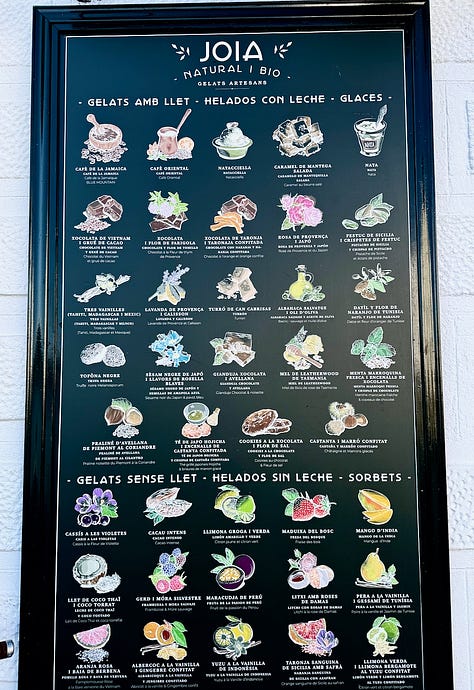
To wind it back to Dalí, where we began, it’s worth noting we also passed through Figueres (his birthplace) to see the almost indescribably bizarre and fantastic Dalí Theatre-Museum. Here’s a few photos of that worthwhile destination, in addition to one photo at his home by the sea in Cadequés.
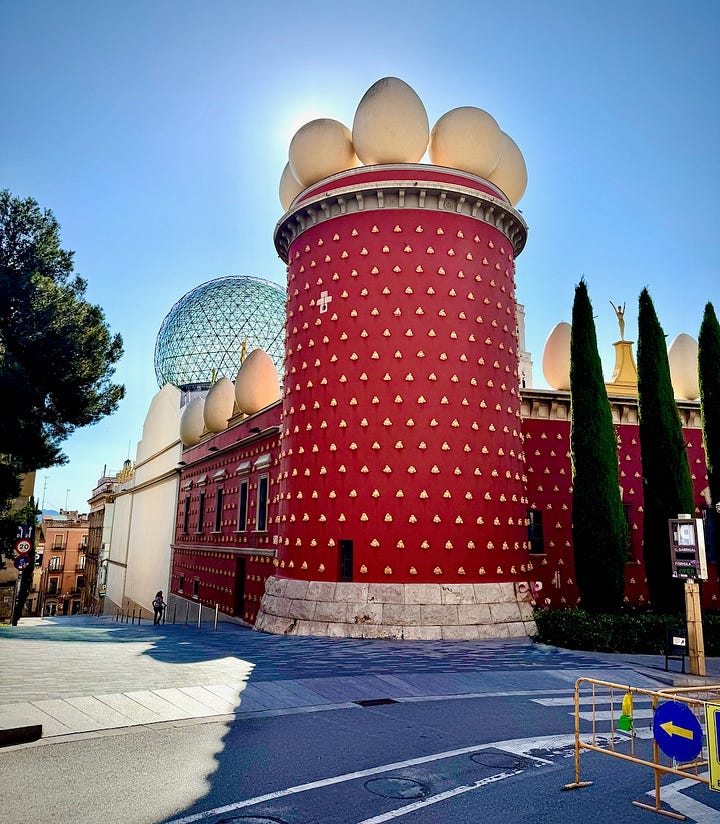
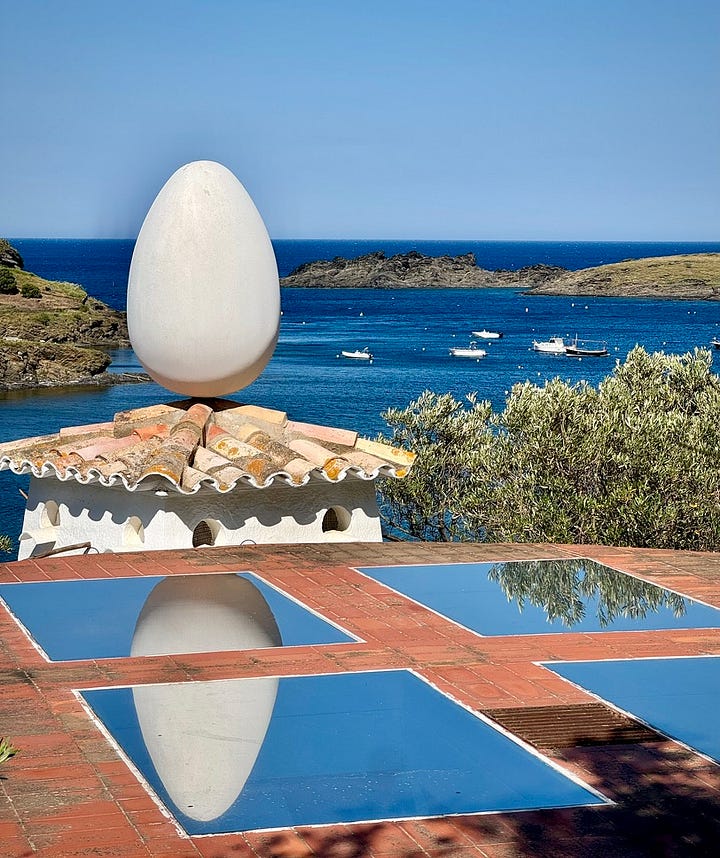
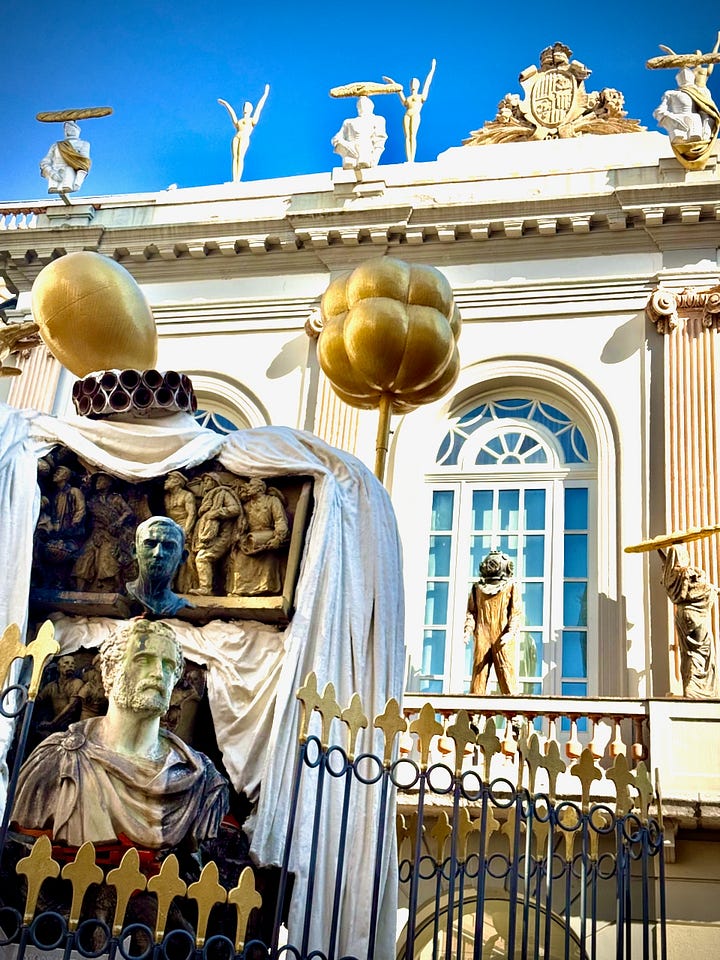
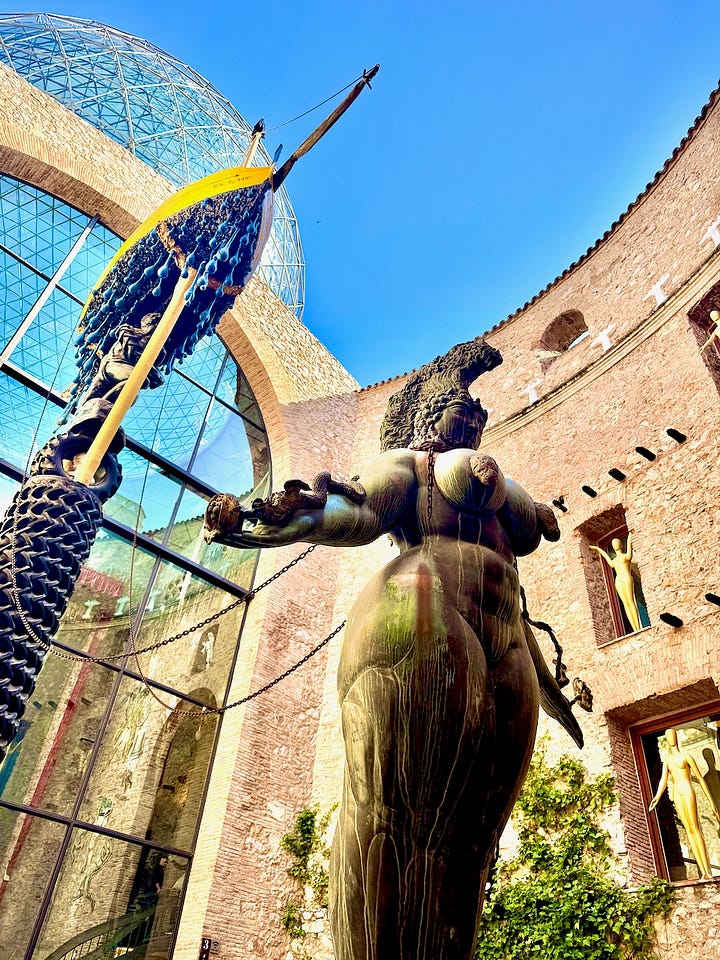
See you back here next week for Spain, Pt. 3! The final chapter, featuring a Michelin meal to remember outside of Barcelona.
